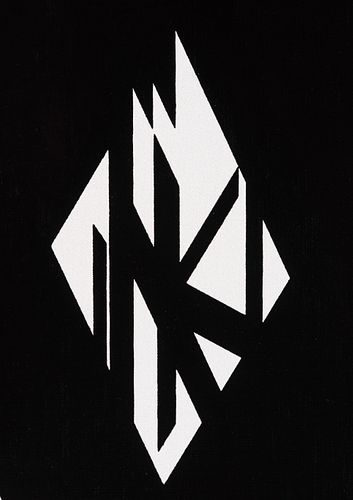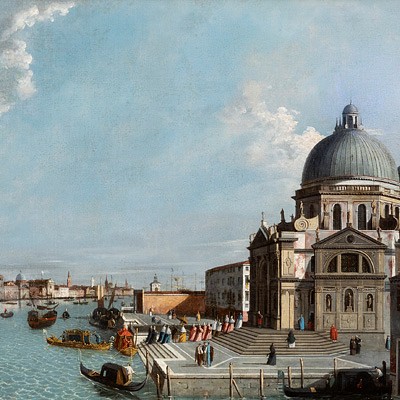PABLO PALAZUELO DE LA PEÑA (Madrid, 1916 - Galapagar, Madrid, 2007). "Untitled", 2005. Oil on canvas. Signed and dedicated on the back: "P.Palazuel
Lot 53
About Seller
Setdart Auction House
Carrer Aragó 346
Barcelona
Spain
Setdart Subastas was born in 2004 and is currently the first online art auction in Spain with solidity, prestige and reliability guaranteed by our more than 60,000 users. Setdart has a young, dynamic and enterprising team ready to successfully manage the purchase and sale of art works through custom...Read more
Estimate:
EUR€50,000 - EUR€60,000
$53,763.44 - $64,516.13
Absentee vs Live bid
Two ways to bid:
- Leave a max absentee bid and the platform will bid on your behalf up to your maximum bid during the live auction.
- Bid live during the auction and your bids will be submitted real-time to the auctioneer.
Bid Increments
| Price | Bid Increment |
|---|---|
| EUR€0 | EUR€10 |
| EUR€200 | EUR€25 |
| EUR€500 | EUR€50 |
| EUR€1,000 | EUR€100 |
| EUR€3,000 | EUR€200 |
| EUR€5,000 | EUR€500 |
| EUR€10,000 | EUR€1,000 |
| EUR€20,000 | EUR€2,000 |
| EUR€50,000 | EUR€5,000 |
About Auction
By Setdart Auction House
May 18, 2021
Set Reminder
2021-05-18 09:30:00
2021-05-18 09:30:00
America/New_York
Bidsquare
Bidsquare : Classics XIX and XX
https://www.bidsquare.com/auctions/setdart-auction-house/classics-xix-and-xx-6961
The next 18th May there will be a 19th and 20th Century Classics Auction at Setdart.com There will be a select repertoire of important artists such as Carlos Cruz Diez, Luis Feito, Joan Miró, Fernando Botero, Josep Llimona, Salvador Dalí among others. Setdart Auction House sofia@setdart.com
The next 18th May there will be a 19th and 20th Century Classics Auction at Setdart.com There will be a select repertoire of important artists such as Carlos Cruz Diez, Luis Feito, Joan Miró, Fernando Botero, Josep Llimona, Salvador Dalí among others. Setdart Auction House sofia@setdart.com
- Lot Description
PABLO PALAZUELO DE LA PEÑA (Madrid, 1916 - Galapagar, Madrid, 2007). "Untitled", 2005. Oil on canvas. Signed and dedicated on the back: "P.Palazuelo, a Rosa y Pere". Reproduced in the reasoned catalog n.367, p.396. Measures: 122 x 81 cm; 136 x 94 cm (frame). This is a painting from Palazuelo's last period, in which he continues his plastic research in the field of what some critics called "trans-geometry", since for the artist from Madrid the diagonal compositions synthesized the idea of transposing, transiting, that is, accessing other levels of reality. This is magnificently suggested in this mature work. An internal angulation combines background and surfaces by means of connecting forms. Palazuelo, starting from the neoplasticist legacy and constructivism, invented new formulas to rediscover the hidden order of nature, the dynamic balance of the cosmos. Painter, engraver and sculptor, Pablo Palazuelo was one of the key figures of Spanish geometric abstraction in the second half of the 20th century. He studied architecture in Madrid and Oxford, but in 1939 he decided to devote himself fully to painting. During these years he competed in various national competitions, such as the National Exhibition in Madrid in 1945. Two years later he began to make his first abstract drawings, and debuted in a group of young artists at the Buchholz gallery in Madrid. In 1948 he moved to study in France, with a scholarship from the French Institute. There he exhibited that same year at the Denise Rene gallery in Paris, which was the definitive push for the dissemination of his work. Throughout his career, Palazuelo has won awards such as the Kandinsky and Carnegie, the Medal of Fine Arts, the National Plastic Arts and the Velázquez Award, among others. In 1995 the Museo Nacional Centro de Arte Reina Sofía dedicated a retrospective exhibition to him, and between 2006 and 2007 the MACBA in Barcelona and the Guggenheim in Bilbao did the same. His style is characterized by a purely linear abstraction, which starts with the post-impressionist experiences of the turn of the century and reaches its ultimate consequences in the sixties with minimalism. Palazuelo conceives art as "a way out of human problems", and populates his works with references to the history of painting. His language is intimately linked to a rational process based on the discovery, not invention, of new forms. Palazuelo is currently represented in the Reina Sofía Museum in Madrid, the Guggenheim in New York and Bilbao, the MACBA in Barcelona, the Maeght Foundation in France, the Museums of Modern Art of the Village of Paris and Rio de Janeiro, the Carnegie Museum of Art in Pittsburgh and the Kunsthaus in Zurich, among many others.
- Shipping Info
-
In-House Shipping
-
- Buyer's Premium



 EUR
EUR CAD
CAD AUD
AUD GBP
GBP MXN
MXN HKD
HKD CNY
CNY MYR
MYR SEK
SEK SGD
SGD CHF
CHF THB
THB












